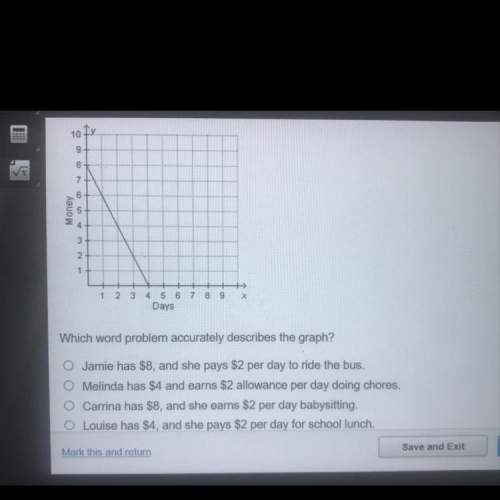
Mathematics, 12.08.2020 07:01 amychan123
A table has five bowls. None of the quantities in the bowls are prime, though the last two bowls are empty. Two of the quantities are squares, and when added to the remaining number, the sum is 21. What are the amounts in the first three bowls?

Answers: 2
Another question on Mathematics

Mathematics, 21.06.2019 19:30
Are triangles the congruent? write the congruency statement.what is the congruency that proves they are congruent? what is the perimeter of ∆pqr?
Answers: 1

Mathematics, 21.06.2019 20:20
Recall that the owner of a local health food store recently started a new ad campaign to attract more business and wants to know if average daily sales have increased. historically average daily sales were approximately $2,700. the upper bound of the 95% range of likely sample means for this one-sided test is approximately $2,843.44. if the owner took a random sample of forty-five days and found that daily average sales were now $2,984, what can she conclude at the 95% confidence level?
Answers: 1

Mathematics, 21.06.2019 23:00
The ratio of the perimeters of two similar triangles is 4: 3. what are the areas of these triangles if the sum of their areas is 130cm2?
Answers: 3

Mathematics, 21.06.2019 23:00
Which rectangle if translated 6 units right and 16 units down and the rotated 90° clockwise about the point (4, -11) will result in rectangle e?
Answers: 2
You know the right answer?
A table has five bowls. None of the quantities in the bowls are prime, though the last two bowls are...
Questions

Geography, 08.04.2021 05:00

Mathematics, 08.04.2021 05:00

Mathematics, 08.04.2021 05:00

English, 08.04.2021 05:00

Mathematics, 08.04.2021 05:00

Chemistry, 08.04.2021 05:00


Arts, 08.04.2021 05:00

English, 08.04.2021 05:00

Mathematics, 08.04.2021 05:00

Mathematics, 08.04.2021 05:00


Mathematics, 08.04.2021 05:00



Biology, 08.04.2021 05:00







